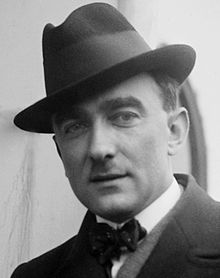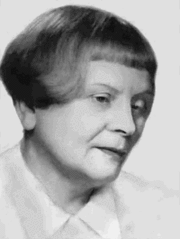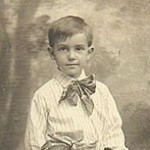A scholar who specializes in Polish history offers a convenient summary of Poland, Warsaw and the erratic history of homosexual life in this often-invaded and defiant country.
Also see:
Gay Poland Stories
Gay Poland News & Reports 2001 to present
Gay Poland Photo Galleries
This report is taken mostly from: An Encyclopedia of Gay, Lesbian, Bisexual, Transgender, and Queer Culture–Poland
By John D. Stanley
A country in Central Europe, Poland in 2011 had a population of 38.5 million. Since 1945, its boundaries have been set rivers in the west, north and east, and mountains to the south. Although Poland has an gay subculture, the country’s predominant attitudes toward homosexuality are negative.
 History of Poland
History of Poland
The Polish state is traditionally dated from 966; Warsaw has been the capital since 1611. The Union of Lublin (1569) united the Kingdom of Poland and the Grand Duchy of Lithuania, resulting in the Polish-Lithuanian Commonwealth, which became famous for its tolerance of religious dissidents during the Reformation. It was also celebrated as the protector of the West at the Siege of Vienna in 1683.
Despite the significant accomplishments of the Polish Enlightenment, including Europe’s first written constitution, the country suffered three partitions (1772, 1793, 1795) that divided the Commonwealth among Austria, Prussia, and Russia, erasing the Polish state from Europe’s map. Although Napoleon established the Duchy of Warsaw (1807-1813), followed by the Congress Kingdom (1815-1830), there was no truly independent Polish state until 1918. The nineteenth century was marked by a series of national uprisings.
Poland won its independence after World War I, although democratic rule was extinguished by a coup d’état in 1926. World War II began with Nazi Germany’s attack on Poland, followed by the country’s occupation and partition by Nazi Germany and the Soviet Union.
The German occupation was notable for its brutality; Poland became the site of the Holocaust. In total six million Polish citizens–20 per cent of Poland’s population–perished during the occupation. Poland’s Jewish community was almost entirely wiped out. Warsaw was left depopulated and in ruins.
After World War II, Poland became part of the Communist world until 1989, when democracy was restored by defiant nationalists. The country is overwhelmingly Roman Catholic and the Church gained widespread respect by serving as an important source of resistance to the Nazis and the Communists. Its prestige was reinforced by the election of the first Polish pope, John Paul II, in 1978.
Homosexuality in Early Polish History
Homosexuality appeared early in Polish history: Boleslaw the Bold (1076 -1079) was accused of sodomy by the medieval historian Jan Dlugosz. Dlugosz also condemned Wladyslaw III, (1434-1444), who led a crusade against the Turks and died at the Battle of Varna. Dlugosz attributed the Christian defeat to the king’s lying with a man before the decisive battle. (He is the only crusader-king not canonized.)
During the eighteenth century, Poland was affected by the fluid attitude toward sexuality that was favored by the Enlightenment’s tolerance and secularism. Poland’s last king, Stanislaw Augustus (1764-1795), was said to have slept with the British ambassador in St. Petersburg, where he was employed as the ambassador’s secretary. (The young man was also a paramour of Catherine II of Russia.)
Jerzy Marcin Lubomirski, a scion of one of the wealthiest magnate families, was known to contemporaries as a “sexual pervert.” A Warsaw newspaper reported the scandal when Lubomirski appeared in women’s clothing at a Warsaw masked ball in 1782.
The Nineteenth and Early Twentieth Centuries
The Napoleonic Code was introduced in the Duchy of Warsaw in 1808. The Code was silent on the issue of homosexuality, which meant there was no legal framework for the oppression of homosexuals. However, after 1815, the three occupying powers’ own legal codes made homosexual acts illegal. In 1835, for example, Nicholas I decreed male homosexual acts to be illegal throughout the Russian Empire.
Although not much information exists about lesbianism in the nineteenth century, Narcyza Zmichowska (1819-1876), a writer and founder of the Polish feminist movement, carried on an affair with the daughter of a rich magnate. The affair was used as the source for Zmichowska’s novel Poganka (The Pagan Woman) (1846).
 After 1918, an independent Poland returned to the Napoleonic tradition and the 1932 criminal code was silent on homosexuality. However, the police used gross indecency laws to harass homosexuals. Nevertheless, inter-war Poland had a thriving gay subculture. Many of Poland’s most important cultural figures during this period, including the gay composer Karol Szymanowski (photo right), the poet Boleslaw Lesmian, and the novelists Jaroslaw Iwaszkiewicz and Maria Dabrowska, were homosexual.
After 1918, an independent Poland returned to the Napoleonic tradition and the 1932 criminal code was silent on homosexuality. However, the police used gross indecency laws to harass homosexuals. Nevertheless, inter-war Poland had a thriving gay subculture. Many of Poland’s most important cultural figures during this period, including the gay composer Karol Szymanowski (photo right), the poet Boleslaw Lesmian, and the novelists Jaroslaw Iwaszkiewicz and Maria Dabrowska, were homosexual.
The Communist Era
In 1948, the Communist regime made age 15 the age of consent for all sexual acts, homosexual or heterosexual. However, the powerful influence of the Roman Catholic Church made open homosexuality scandalous in all but a few circles. As in other countries, the Roman Catholic Church traditionally has had a large percentage of gay priests, since the priesthood is one of the few acceptable ways to avoid marriage in a traditional society.
Despite social disapproval, a network of cafés, pissoirs, and street cruising provided opportunities for a gay subculture to grow. A 1981 article in the prominent weekly Polityka set off a national discussion on homosexuality.
Beginning in 1986, the underground gay newspaper ‘Filo’ from Gdansk was distributed in editions of less than 100. In addition, the gay poet Grzegorz Musial was officially published. However, Jerzy Andrzejewski’s last novel Miazga (Pulp), which dealt with homosexuality, could be published only abroad in its uncensored version.
The Communist government used traditionally negative attitudes toward homosexuality as a way of blackmailing homosexuals and the police felt free to harass gay men and lesbians. This activity culminated in the 1985 “Operation Hyacinth,” which led to the arrest of many gay men.
The Gay Movement
Since 1989, a public gay movement has developed. Warsaw is the center of Polish gay life with bars and baths, in addition to the cruising areas mentioned earlier. Cracow, Gdansk, Poznan, and Wroclaw also have gay commercial infrastructures, as well as gay organizations.
Lamba, a gay umbrella organisation, was legally registered in 1990. The abolition of censorship saw a wave of gay periodicals, such as Inaczej (Poznan), but this quick efflorescence has now been reduced to the commercially successful and sex positive Nowy Men (New Men).
The first Gay Pride Parade took place in Warsaw in 1995. In 1996, the Lesbian Information and Counseling Center was established.
AIDS in Poland results primarily from drug injection, although it has touched the gay community. For example, in 1995, an exhibition on “I and AIDS” was organised in Warsaw and featured the work of the openly gay artist Andrzej Karas. Swedish, Canadian, and German groups have actively aided the anti-AIDS campaign in Poland.
The 1997 constitution banned discrimination “on any grounds,” although the Roman Catholic hierarchy prevented specific protection from discrimination on the basis of sexual orientation. In addition, the constitution limits marriage to heterosexuals. 
Opinion polls consistently show that 70 to 80 per cent of Poles dislike homosexuals. The Campaign against Homophobia has featured controversial posters to challenge viewers’ assumptions. There is no distinct lesbian movement, but secular women’s organizations are supportive of homosexual causes.
Although the foundation for a gay and lesbian community has been laid and the legal framework is favorable to gay life, the Roman Catholic Church encourages public anti-gay attitudes so the lives of individual gay men and lesbians continue to be difficult.
Warsaw
An important financial, commercial, intellectual, and cultural center in Eastern Europe, Warsaw is Poland’s capital and largest city. In 2011, it had a population of 1.7 million people.
Warsaw has a very long history. A settlement has existed on its site since the tenth century. By the thirteenth century Warsaw was considered a city. Warsaw’s location on important trade routes soon gave it national significance. In 1611, it replaced Cracow as Poland’s capital.
Sponsor Message.
In the eighteenth century, Warsaw prospered as it became a commercial, manufacturing, and banking center. By 1792, the city’s population had attained 100,000. The court of Stanislaw August (reigned 1764-1795) in Warsaw became the motor for the Enlightenment project in Poland. After Poland’s second partition, the city rose up against Russian domination in 1794.
When the Polish state was extinguished in 1795, Warsaw was ceded to Prussia. Napoleon entered the city in 1806, and he made Warsaw the capital of the small Duchy of Warsaw (1807-1813), and then of the slightly larger Kingdom of Poland (1815-1830). By 1829, Warsaw’s population was 140,000. A series of uprisings against Russian rule (1830-1831, 1863-1864, and 1905) led to increasingly oppressive conditions.
With the construction of railway lines to St. Petersburg and Vienna in the mid-nineteenth century, Warsaw became an important transportation and industrial center. Its population increased dramatically, from 500,000 in 1900 to 764,000 just ten years later. With the development of a large working class, it soon became the center of Polish socialism. By 1900, the city was the most populous Jewish center in the world, and it became a focus of Jewish political, cultural, and intellectual life.
Poland again became independent in 1918, and Warsaw became once again a capital city and Poland’s largest industrial and commercial center. By 1939, its population was 1,289,000.
From September 8 to 28, 1939, Warsaw defended itself against the German Blitzkrieg. When the city surrendered, it had sustained over 50,000 dead, as well as heavy damage from incessant bombing.
During the Nazi occupation, Warsaw’s population drastically declined: as many as 670,000 residents died, including the city’s 375,000 Jews, who were systematically exterminated by the Nazis, along with the Polish intellectual and cultural elite. The city’s revolutionary traditions were continued with the Warsaw Ghetto Uprising of 1943 and the Warsaw Uprising of 1944, after which Hitler ordered the city depopulated and physically erased. Over 85% of the capital’s buildings were systematically burned and destroyed.
Warsaw was liberated in January 1945, and by 1948 a Communist regime firmly controlled Poland. Under the Communists, Warsaw was physically restored. Once again Warsaw became Poland’s largest city. Warsaw was a center for the Polish workers’ movement, Solidarity, in 1980 and 1981. With the fall of the Communist regime, the city once again became a self-governing municipality.
Most residents are ethnic Poles, and the population is predominantly Roman Catholic, though there is a small Protestant minority and a tiny but vibrant Jewish community.
Polish Gay Traditions
Warsaw has a lively gay tradition. During the late eighteenth century, Warsaw’s royal court and magnate palaces were the sites of cross-dressing balls. It was rumored that Poland’s last king, Stanislaw August, was bisexual.
The Code Napoleon, in force during the period of the Duchy of Warsaw, was silent on the issue of homosexuality, and this treatment came to be considered Poland’s legal norm. However, under Russian rule, imperial laws prevailed: from 1835 homosexuality was illegal throughout the empire. This prohibition was confirmed by the Russian criminal code of 1903. The code’s paragraph #516 decreed that those convicted of “pederasty” were to be sentenced to no less than three months in prison.
Lesbians in Warsaw
The history of Warsaw’s lesbians is barely documented. While isolated figures such as novelist and poet Narcyza Zmichowska (1819-1876) and writer Maria Dabrowska (1889-1965; photo right) are known, social circles or cultural bodies were not documented until the post-Communist period.
Lesbianism was not mentioned in the Russian criminal code in force in Warsaw, and Polish criminal codes have always also been silent on lesbianism. Currently, there are no exclusively lesbian organizations in Warsaw. Some women’s organizations provide space for meetings of lesbians, as does the gay men’s group Lambda Warsaw.
The Inter-War Period
During the inter-war period, such reformers as Professor Anton Feliks Mikulski (1872-1925) worked to remove the existing foreign laws outlawing homosexuality. Mikulski wrote an influential treatise on homosexuality in 1920 that demonstrated the rise of the medical model of homosexuality on Polish soil. Such reform efforts were successful: independent Poland’s criminal code of 1932 was silent on homosexuality, in keeping with earlier Polish legal tradition.
 Warsaw’s intellectual and cultural elite had a distinct gay component at this time. The Skamander circle of poets, the most important in inter-war Poland, was dominated by homosexual men. Such figures as the composer Karol Szymanowski (1882-1937), the writer Jaroslaw Iwaszkiewicz (1894-1980), the poets Boleslaw Lesmian (1877-1937) and Jan Lechon (1899-1956), as well as the novelists Tadeusz Breza (1905-1970), Jozef Czechowicz (1903-1939), and Witold Gombrowicz (1904-1969) demonstrated the strength of gay life in the Polish capital. However, most Poles looked down upon homosexuality as a perversion, an outlook encouraged by the conservative Roman Catholic hierarchy.
Warsaw’s intellectual and cultural elite had a distinct gay component at this time. The Skamander circle of poets, the most important in inter-war Poland, was dominated by homosexual men. Such figures as the composer Karol Szymanowski (1882-1937), the writer Jaroslaw Iwaszkiewicz (1894-1980), the poets Boleslaw Lesmian (1877-1937) and Jan Lechon (1899-1956), as well as the novelists Tadeusz Breza (1905-1970), Jozef Czechowicz (1903-1939), and Witold Gombrowicz (1904-1969) demonstrated the strength of gay life in the Polish capital. However, most Poles looked down upon homosexuality as a perversion, an outlook encouraged by the conservative Roman Catholic hierarchy.
Communist Poland
In People’s Poland, the Communists did not criminalize homosexual activity as Stalin had in the Soviet Union. A gay elite re-appeared: the most important figure in cultural politics, Jaroslaw Iwaszkiewicz, was joined by the novelists Jerzy Andrzejewski (1909-1983) and Julian Stryjkowski (1904-1996).
By the 1970s, cafés such as the Alhambra on al. Jerozolimskie, “Na trakcie” on ul. Krakowskie Przedmiescie, the bar at the Ambassador on ul. Ujazdowskie, the café Antyczna on ul. Nowy Swiat (opposite the pissoir on Plac Trzech Krzyzy), and the washrooms at Warsaw’s Central Station were popular cruising grounds. However, all press organs and cultural organizations were controlled by the Communist government, which did not permit homosexual expression or organizing. Moreover, the police kept detailed records on anyone suspected of homosexuality.
The first open discussion of Warsaw’s homosexual underground arose from a 1981 article in the important Warsaw weekly, Polityka, connecting the need for greater tolerance with the importance of controlling the spread of AIDS. By permitting the publication of this article, the Communists seemed to be opening the door to greater tolerance for homosexuality. Indeed, beginning in the autumn of 1983, the periodical’ Relax’ permitted classified ads for encounters between gay men.
The first article from the point of view of a gay male appeared in Polityka in 1985: its author, Dariusz Prorok, described in vivid detail the dominant society’s treatment of gay people. Despite such openings, the Ministry of Internal Affairs and the police continued to collect records on homosexuals, using the need to control venereal disease as the excuse to launch Operation Hyacinth in November 1985.
During this operation, the police picked up hundreds of gay men at work, school, and home, interrogated them, and attempted to blackmail them into collaboration. Ironically, the first attempts at establishing a gay movement were linked to these mass arrests, including the appearance of the first (and last) issue of a Warsaw gay newspaper, Efebos, in June 1987.
Democratic Poland
With the return of democracy in 1989, Warsaw’s gay community established its own organization, “Lambda,” in October 1989; the Provincial court in Warsaw officially registered this body in February 1990. The first gay campaign for tolerance, “Love, don’t kill” [Kochaj, nie zabijaj], took place that spring, with the publication and distribution of safe sex pamphlets and the establishment of a confidential telephone line.
Warsaw’s Pink Service began to publish the English-language “Warsaw Gay News” in September 1990, and Warsaw soon had three more gay monthlies: Men, OKAY, and Gayzeta–Nie? Tak?. The city’s first gay demonstration took place in 1993 on Valentine’s Day, when Lambda Warsaw passed out brochures that insisted on the equal value of love, whether it be homosexual or heterosexual.
In 1994, Lambda Warsaw held a press conference to release its “Report on the discrimination for reasons of sexual orientation in Poland” [Raport o dyskryminacji ze wzgledu na orientacje w Polsce]. For the first time in Polish history, discrimination against gays and lesbians was formally documented.
On June 17, 1995, the first official celebration of gay pride took place in Warsaw at the student pub “Giovanni.” During the 1995 election campaign, the successful Social Democratic candidate for president, Aleksander Kwasniewski, publicly appealed for support from gay and lesbian voters.
Although the Roman Catholic Church condemns homosexuality and opposes all efforts to attain the slightest acceptance, it could not stop Warsaw’s gay movement. Józef Cardinal Glemp, Archbishop of Warsaw and Primate of Poland, publicly condemned homosexuality, blaming it for the fall of the Roman Empire. Pope John Paul II, the first Polish head of the Roman Catholic Church, also decried the adoption of children by gay couples and the introduction of gay marriages.
In 1994, a group of gay Christians–Grupa Lesbijek i Gejow Chrzescijan w Warszawie–was established to engage in dialogue with the church hierarchy and to integrate gays and lesbians into the life of the church. However, such overtures have been met with silence.
Warsaw Today
(from http://www.warsaw-life.com/poland/gay-warsaw)
Being gay in Poland is no easier than being gay in any deeply Catholic, formerly Communist, state – in other words, it’s no walk in the park. But modern Warsaw is the most open city in Poland when it comes to the acceptance of homosexuality, and many gay and lesbian Poles will also tell you it’s also the place with the most gay and gay-friendly clubs. (Also, blood donation by LGBT people is allowed.)
On this warsaw-life.com website is a selection of the best clubs and cafes, and even hostels and hotels for the gay or lesbian traveler, as well as some Polish websites of various GLBT organizations and communities. For general information about the history and current laws and statistics on homosexuality in Poland, see our Gay Krakow page. The yearly Gay Pride Parade continues.
Author John D. Stanleyis an independent scholar who has lived in Toronto since 1971 and specializes in the history of Poland, particularly during the Enlightenment. He received the Ph.D. from the University of Toronto and has published in such journals as Canadian Review of Studies in Nationalism and Canadian Slavonic Papers. He contributed two articles to Who’s Who in Gay and Lesbian History: From Antiquity to World War II (2001).

















